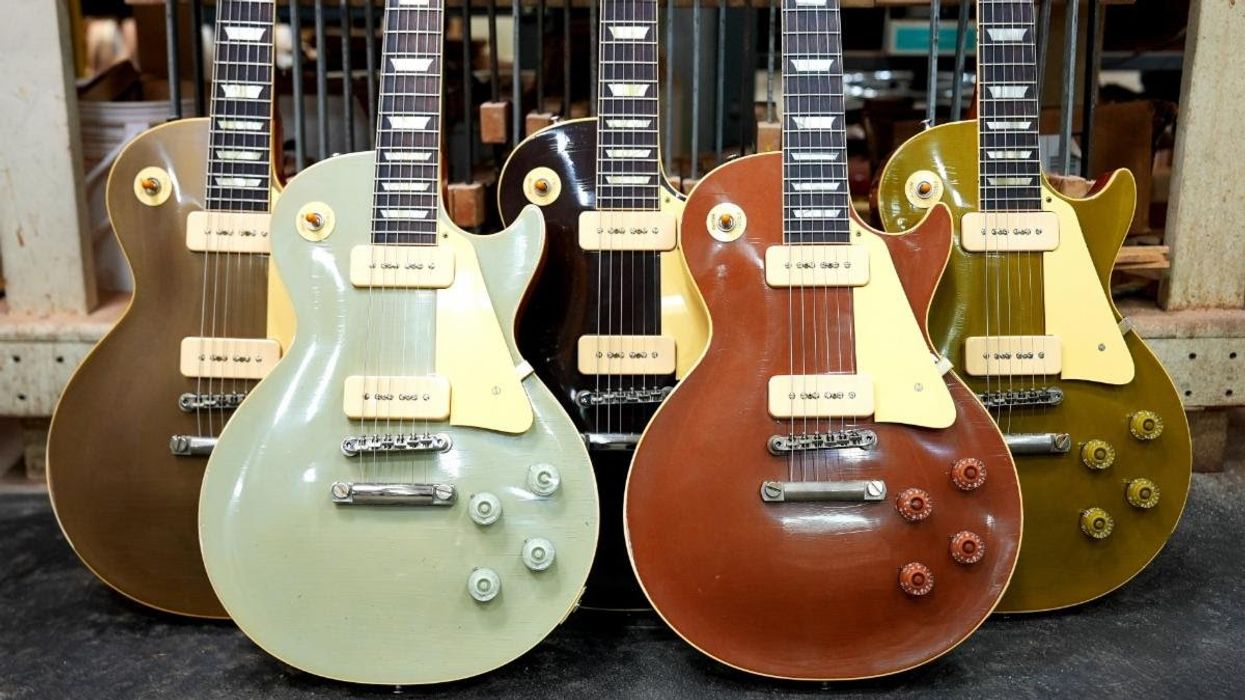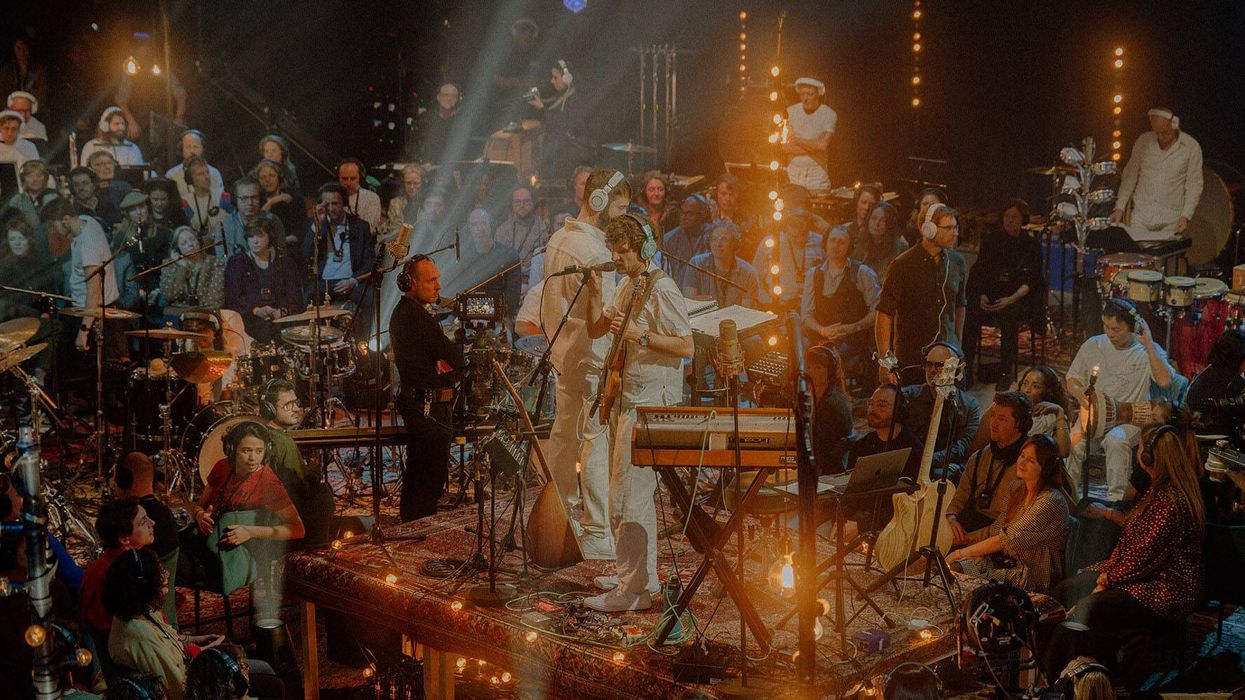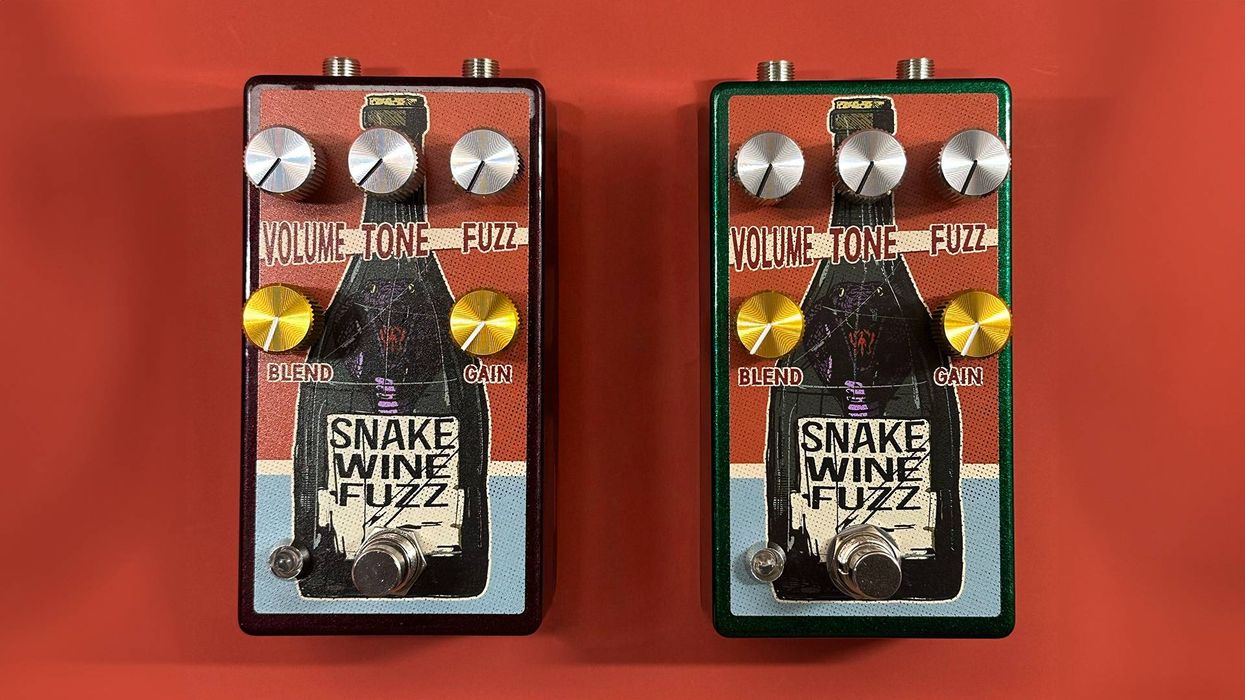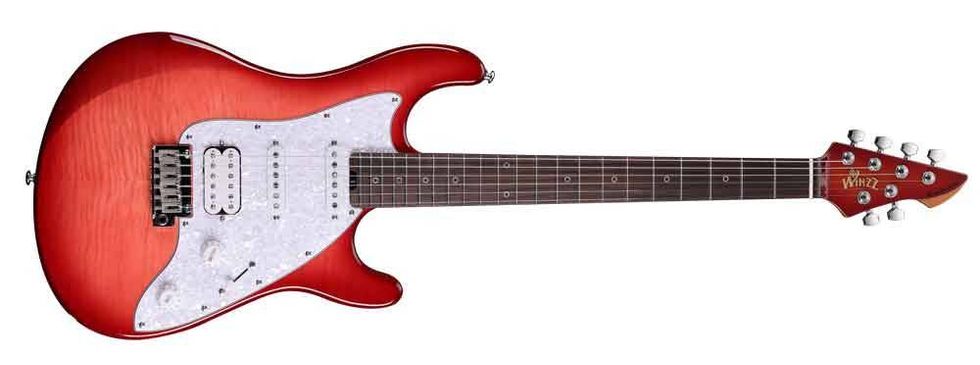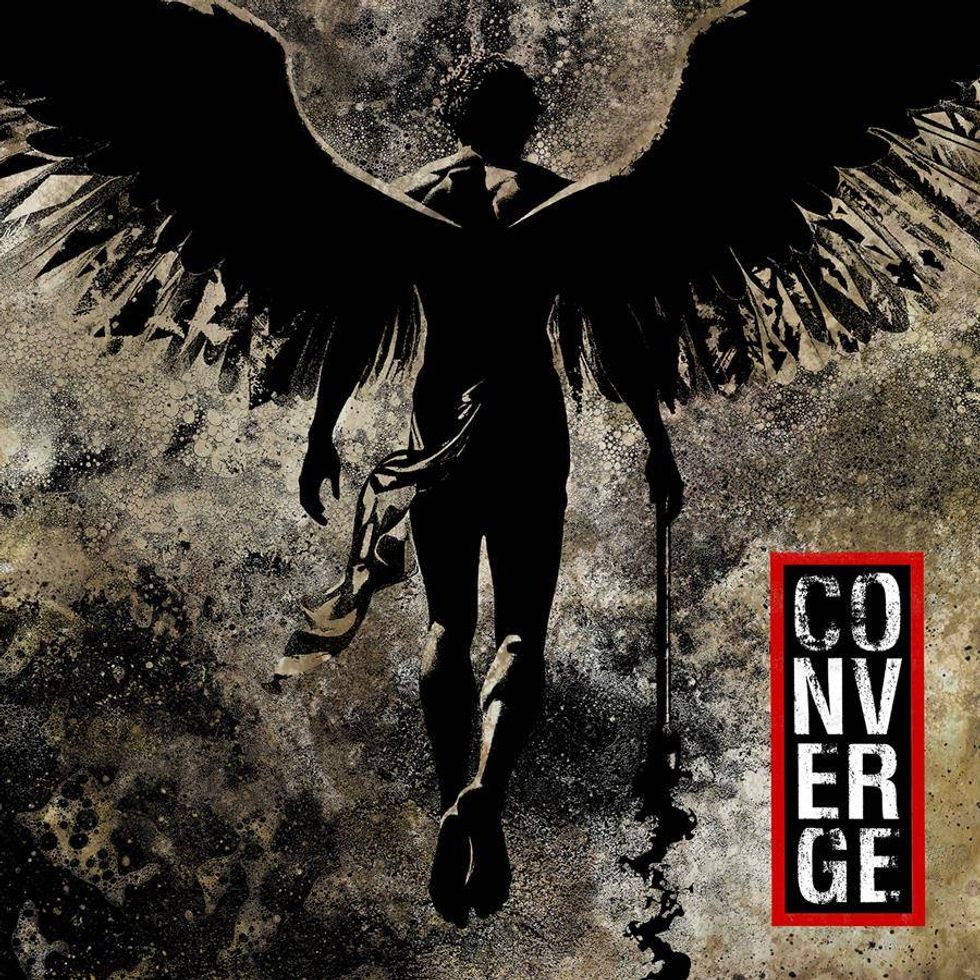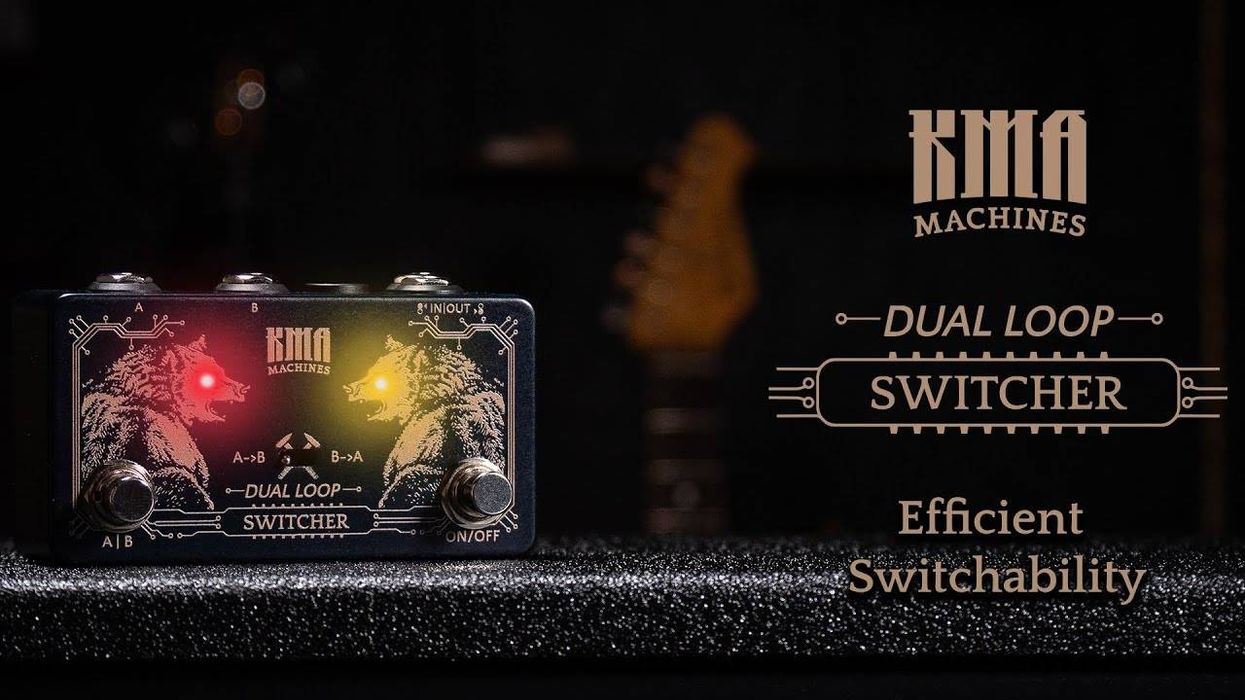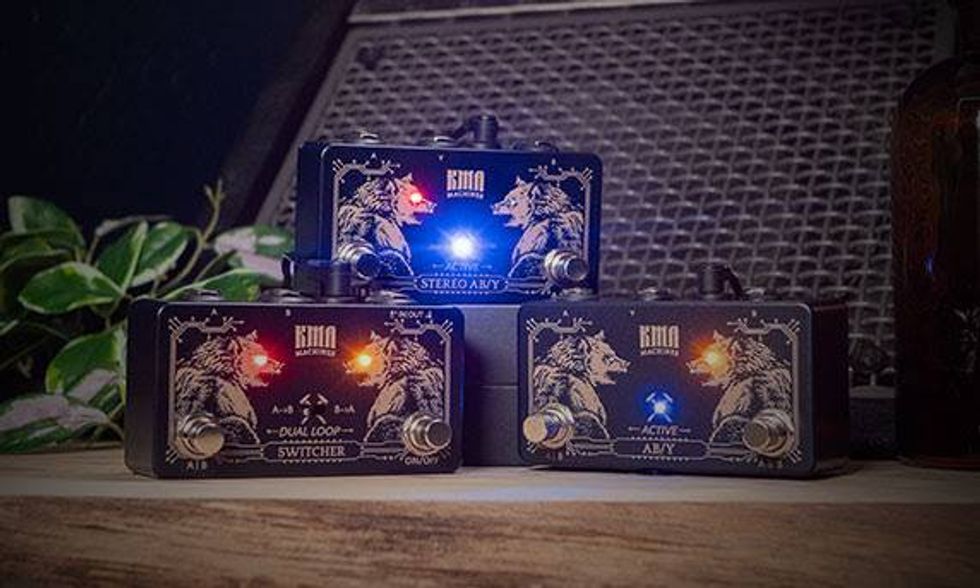Gibson returns to NAMM 2025 this week to showcase their 2025 lineup.
1955 NAMM Show Commemorative Edition Les Paul
Gibson Custom introduces the 1955 NAMM Show Commemorative Edition Les Paul, celebrating the 70th anniversary of the five custom color Gibson Les Pauls that were displayed at the 1955 NAMM Show. Gibson displayed these five distinctive Les Paul models at the 1955 NAMM Show--which was held in Chicago, IL--with each guitar finished in one of five custom metallic nitrocellulose lacquer car finishes–Samoa Beige, Copper Iridescent, Nugget Gold, Platinum, and Viceroy Brown. In addition to their custom metallic finishes, they were outfitted with no-wire ABR-1 Tune-O-Matic bridges and Stop Bar tailpieces. These bridges were first introduced on the Gibson Super 400 in 1953 and were used on the 1954 Les Paul Custom, but they made their first appearance on a standard Les Paul model with the five guitars that were displayed at the 1955 NAMM Show. These distinctive-looking and historically notable Les Pauls were made in extremely limited numbers, and the whereabouts of only a few are known today.
This special run is limited to only 70 guitars in each of the custom colors, with the custom metallic nitrocellulose lacquer car finishes expertly recreated by Gibson for the first time ever. Each of these guitars features historically accurate 1955 specifications, including a lightweight one-piece mahogany body and a hide glue-fitted two-piece plain maple cap. Even the color matched Speed knobs replicate the knobs on the guitars that were shown at the 1955 NAMM Show. The one-piece mahogany neck has a long neck tenon, a 1950s Chunky D-Shape neck profile, and an Indian rosewood fretboard that has 22 historic narrow/tall frets, a 12” fretboard radius, and is adorned with aged cellulose nitrate trapezoid inlays. The headstock features a period-correct “low logo” holly headstock veneer and is equipped with a nylon nut and single line, single ring Kluson® tuners, and has a historical 1955 limited run serial number on the back. The pickups are a pair of cream-covered Custom Shop P-90 Soapbars that are hand-wired to 500k CTS potentiometers and paper-in-oil capacitors. Each guitar in this limited edition also features Light Aging by the skilled artisans of the Murphy Lab. The Murphy Lab Light Aged finish treatment, paired with lightly aged hardware, simulates decades of light play wear, giving these guitars the unique character, vibe, and feel of an original example from the Gibson Golden Era. A brown/pink Lifton five-latch case is also included to complete the authentic vintage ownership. Highly collectible, only 70 of the 1955 NAMM Show Commemorative Edition Les Paul guitars from Gibson Custom will be made in each of the five colors, for a total of 350 guitars.
Warren Haynes Les Paul Standard
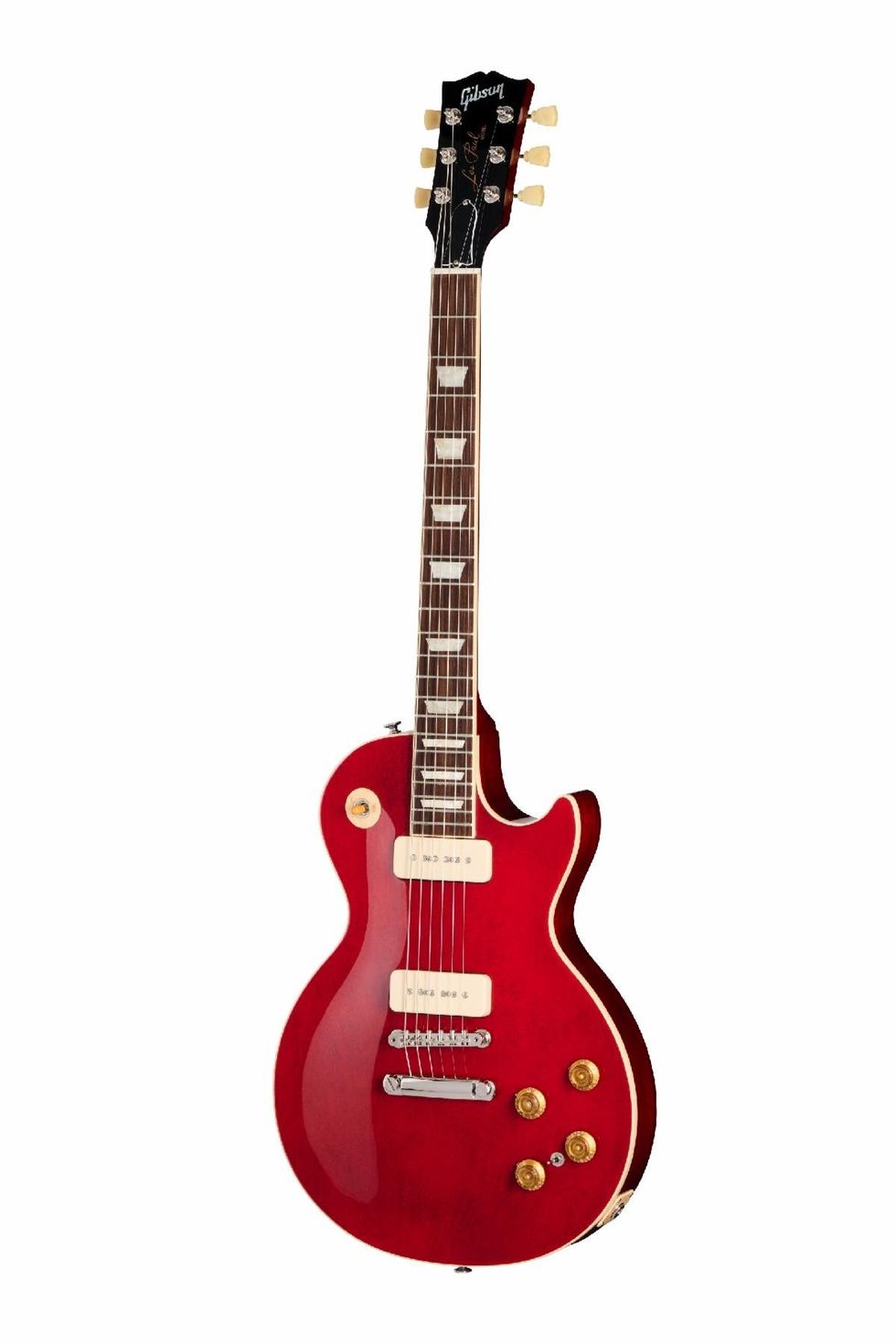
Warren Haynes is highly regarded for his work in rock, blues, and Americana music with the Allman Brothers Band, as a founding member of Gov’t Mule, as a session guitarist and sideman for numerous famous friends and groups, as the leader of The Warren Haynes Band, and as a solo artist. A master of multiple styles and genres, Warren has also shared his expertise with other players via multiple instructional videos. A self-described “Gibson man,” Warren has used several Gibson models throughout the years, including his cherished ’61 ES-335, among others. The Warren Haynes Les Paul Standard is another standout, with features tailored specifically to Warren’s preferences, including a mahogany body with a plain maple cap topped with a 60s Cherry finish, just like his cherished ’61 ES-335, a mahogany neck with a chunky 50s vintage neck profile, like all of Warren’s favorite Les Pauls, and much more. Bearing the traditional looks and feel of a 50’s-era Les Paul coupled with modern features like hum-free P-90 DC pickups and an on board clean boost, the Gibson Warren Haynes Les Paul Standard bridges modern and traditional and is a great choice for players who, like Warren, want both a traditional appearance and modern functionality in one outstanding guitar.
1936 Advanced Jumbo
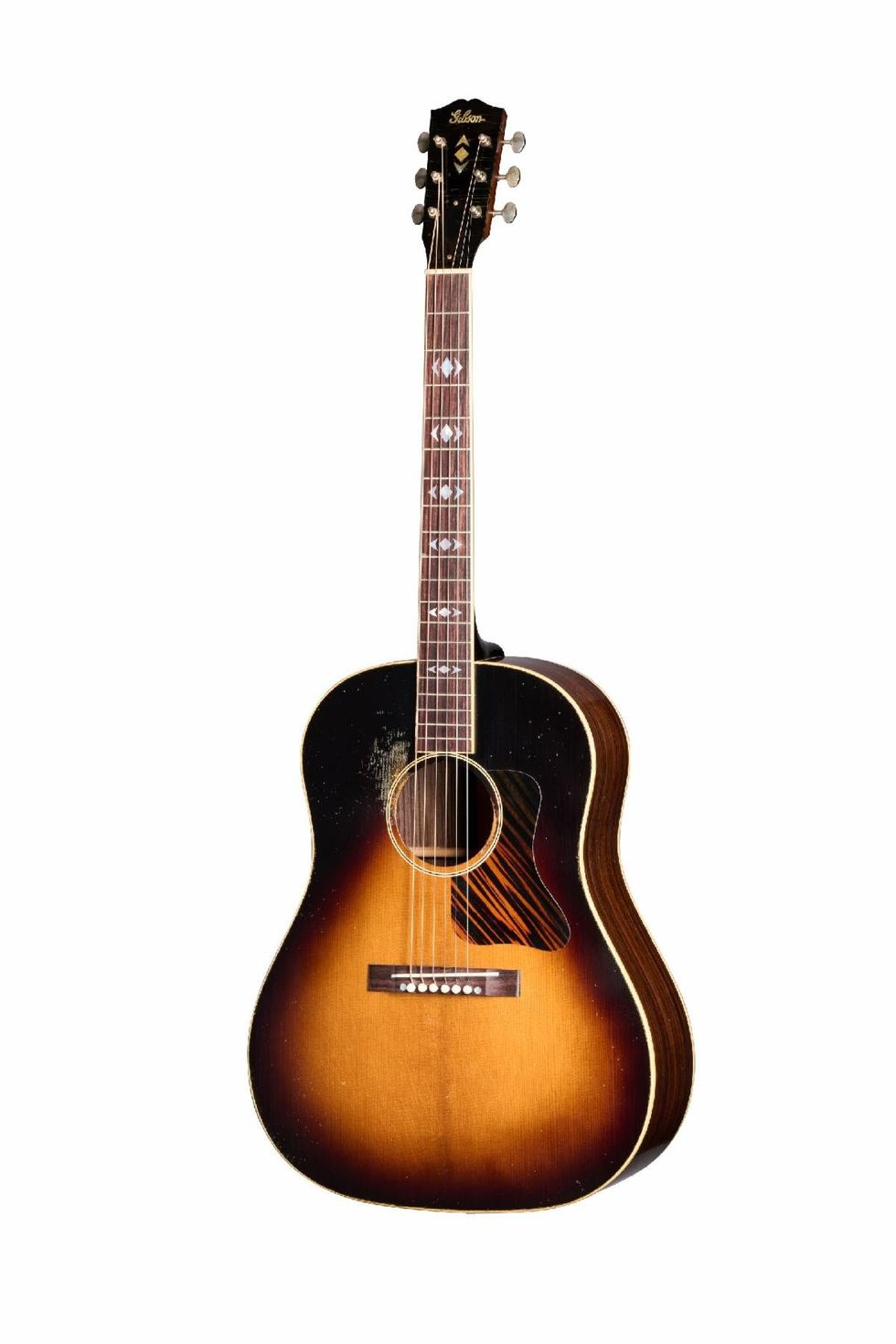
Gibson Custom is proud to introduce the Gibson 1936 Advance Jumbo “Heavy Aged” acoustic guitar. During a time when cultural optimism was low, Gibson dreamed up a new line of advanced instruments, and included in those models was the Advanced Jumbo. Due to low production numbers from 1936-1939, this model largely flew under the radar even though it was a supreme-sounding and performing instrument. Outfitted with a thermally aged red spruce top, rosewood back and sides, and premium Waverly tuners, the 1936 Advanced Jumbo brings back all the tone and prestige that made these such sought-after instruments by artists and collectors. It features Heavy Aging by the skilled artisans of the Murphy Lab. The Murphy Lab Heavy Aged finish treatment, paired with heavily aged hardware, simulates decades of heavy play wear, giving it the unique character, vibe, and feel of an original example from the Gibson Golden Era. The Gibson 1936 Advance Jumbo arrives in a stunning Vintage Sunburst, expect a heavy weather-checked finish, heavy belt buckle wear, light arm wear, and light neck wear.
1939 SJ-100
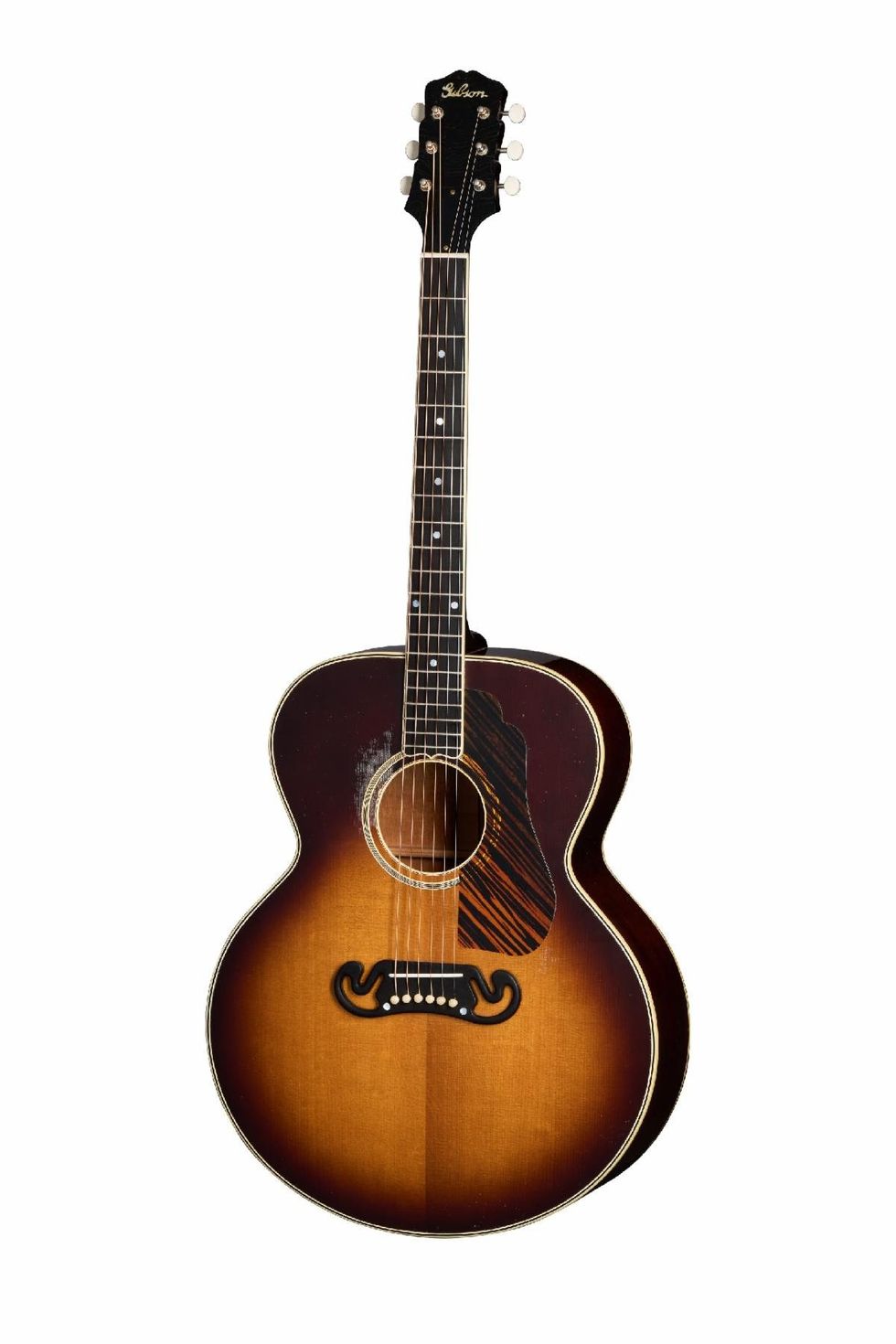
New for 2025, the Gibson Custom 1939 SJ-100 is a replica of the rare and distinctive mahogany-backed Super Jumbo 100 that was built for only a few years (circa 1939-1942). The 1939 SJ-100 Heavy Aged fully replicates the original and exceptionally rare 1939 SJ-100 guitars that are coveted by collectors and vintage Gibson experts around the world. It features a thermally aged red spruce top, mahogany back and sides, and a two piece maple neck with a rounded profile and an ebony fretboard. Other notable features include a vintage SJ-100 style firestripe pickguard, the rare, vintage “stair step” headstock design, the Gibson script headstock logo inlaid in mother of pearl, and Waverly tuners with ivoroid knobs. Crafted by the expert luthiers and craftspeople at the Gibson Custom Shop in Bozeman, Montana, the Gibson Custom 1939 SJ-100 has been artfully aged by the artisans of the Murphy Lab to give it the look and feel of a long-cherished musical companion.
1942 Banner J-45
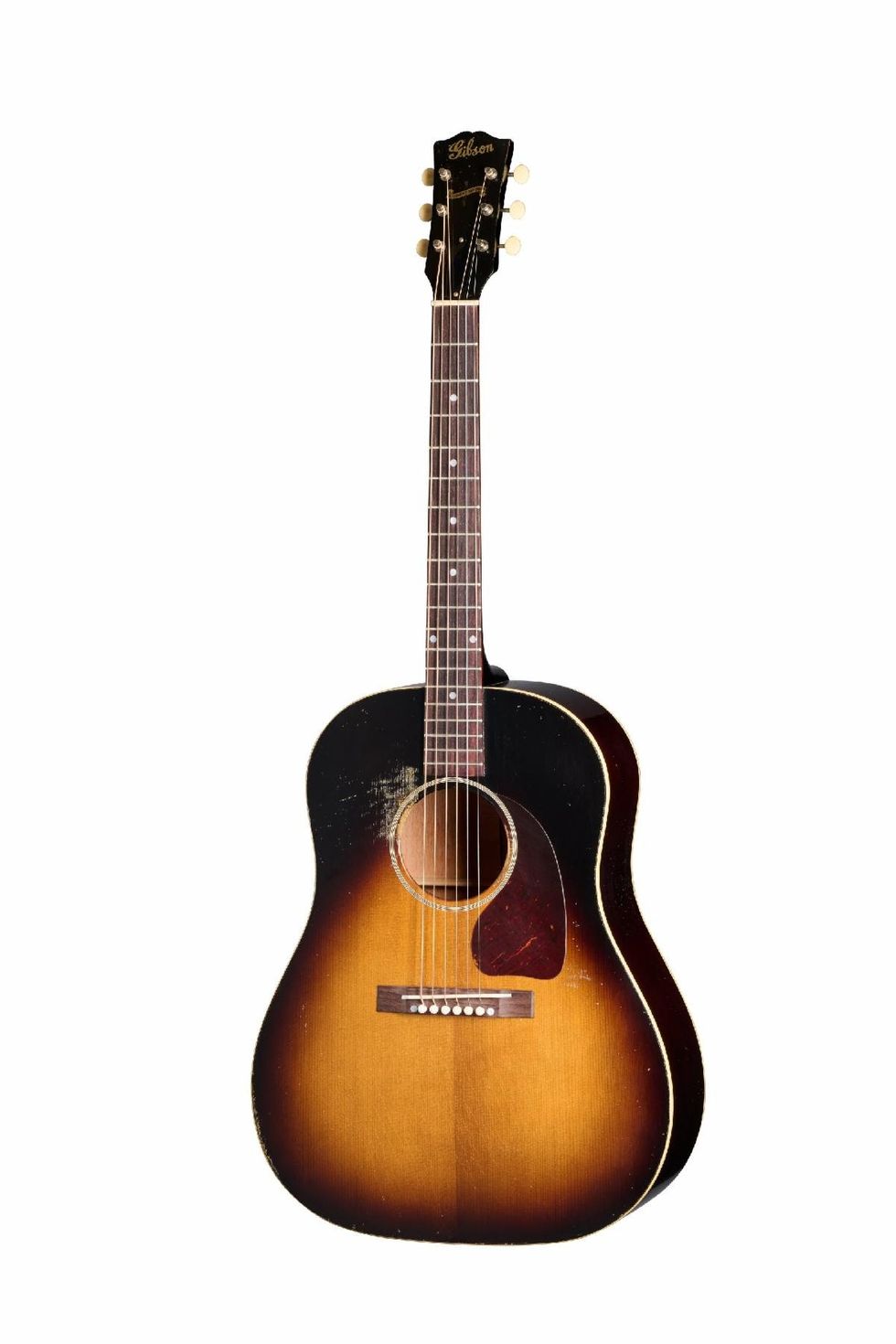
The allure and legend of the Gibson J-45 lives on in the new Murphy Lab 1942 Banner J-45. Inspired by the holy grail of vintage acoustic instruments, luthiers in Montana meticulously crafted a J-45 just like the most popular and celebrated version in structure and components. The new 1942 Banner J-45 includes a thermally aged red spruce top hand-sprayed with a historic-style burst, hot hide glue top bracing for better tonal response, and a bone nut and saddle. It features a Heavy Aging finish by the Murphy Lab paired with heavily aged hardware that simulates decades of heavy play wear, giving it the unique character, vibe, and feel of an original example from the Gibson Golden Era. The 1942 Banner J-45 arrives in a striking Vintage Sunburst, expect a heavy weather-checked finish, heavy belt buckle wear, light arm wear, and light neck wear.
Margo Price J-45
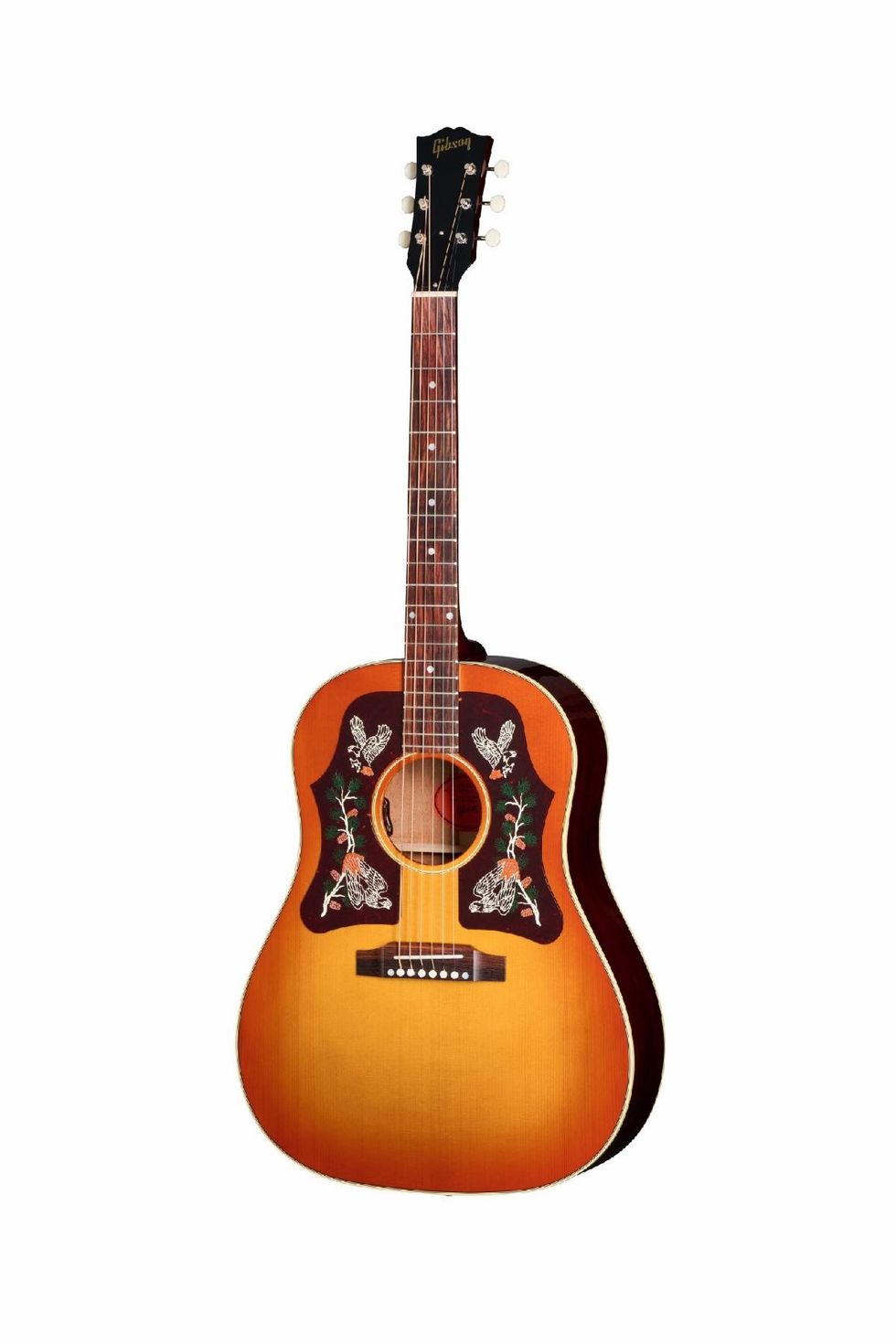
The music of multiple award-winning artist Margo Price transcends the boundaries of traditional country, Americana, and classic rock, and her Gibson J-45 acoustic has always been by her side during her rise as a top country artist. Gibson Custom’s Margo Price J-45 embodies the spirit, vision, and talent that has driven Margo to stardom and continues the nature-themed model tradition of Gibson. The Margo Price J-45 was inspired by her mid-60s J-45, a guitar she’s called “my main baby; my guitar I play all the time.” The Margo Price J-45 features a slightly thinner mahogany body with a red spruce top with traditional hand-scalloped advance X-bracing, a mahogany neck with a Rounded profile and rosewood fretboard, and Grover strap tuners with white buttons. The nut and saddle are bone and the bridge pins are TUSQ. The Margo Price J-45 also comes equipped with L.R. Baggs electronics, so it’s studio and stage ready right out of the included hardshell case. Margo was also inspired by red-tailed hawks, which feature prominently on the distinctive double 50s-style pickguards of her new signature guitar. As Margo says, “Red Tailed hawks have always been symbolic to me. I see them everywhere, and I always have, as they’re common all over the U.S., but to me, they’re otherworldly, and they always come to me in my time of need with messages of strength and perseverance. Red, as a color, relates to love, passion, and even anger, matters that we typically would associate with the heart, but if you look closely, the ends of their feathers are dipped in white, and the bird itself has a spiritual nature. When I’m on long trips, I look out the window and count them alongside the highway. They pass over me at the most kismet times, reminding me to find strength in my vulnerability, and to open up and connect with those around me. I hope this guitar will remind those who play it these lessons as well.”
Les Paul Custom
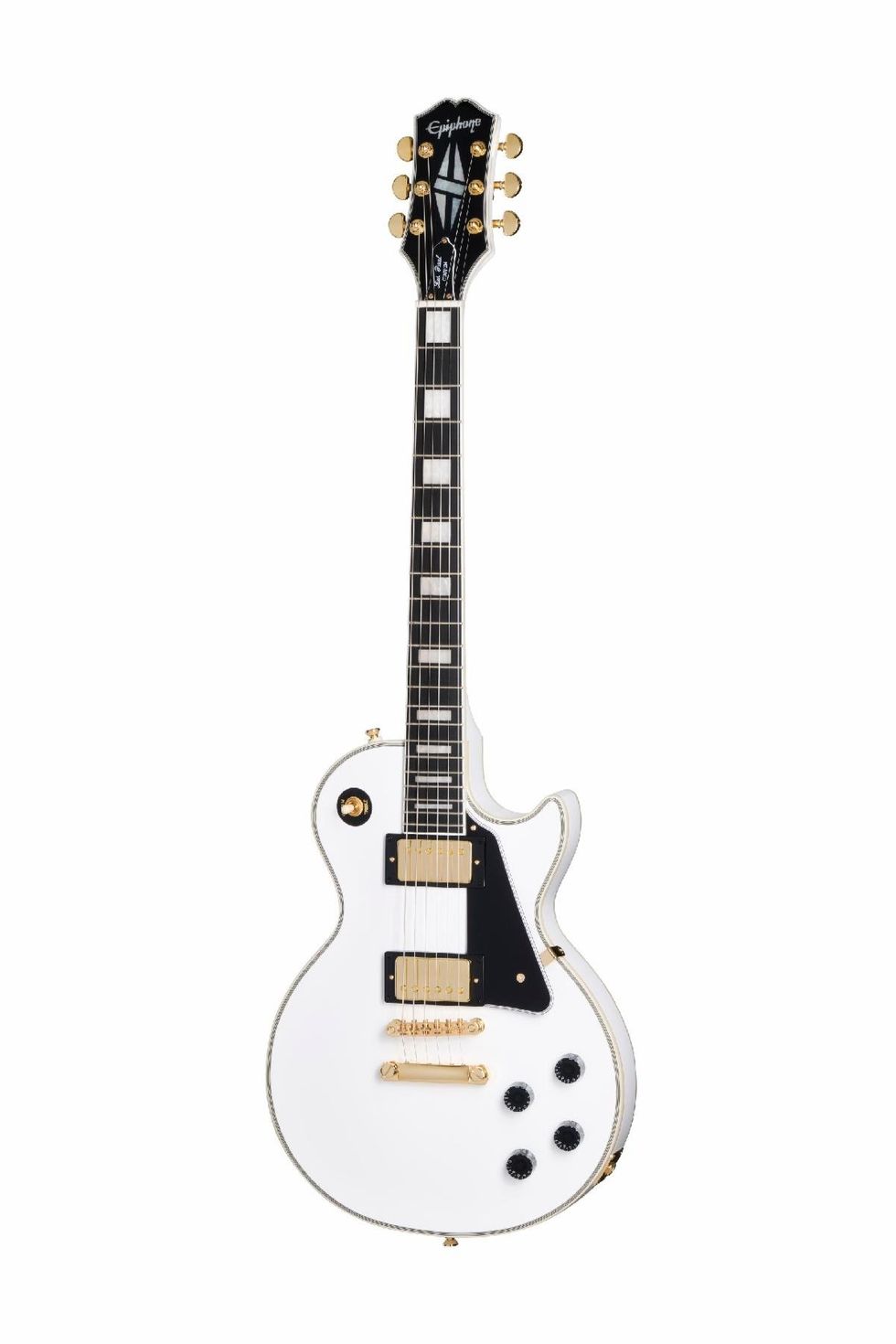
The Epiphone Les Paul Custom has been updated and is now better than ever. Part of the Inspired by Gibson Collection, it honors the 1950s-era classic that was designed by Mr. Les Paul himself in 1954 as the “tuxedo” version of his groundbreaking solidbody masterpiece. It features an all-mahogany body, a mahogany neck with a refined Modern Medium C neck profile, an ebony fretboard and pearloid block inlays and medium jumbo frets, gold hardware, including a gold Epiphone LockTone Tune-o-Matic bridge and LockTone Stop Bar tailpiece, a pair of Epiphone’s new Probucker Custom humbucker pickups, which are based on Gibson Custom’s Custombucker humbucking pickups, and a larger Custom split-diamond inlay on the headstock, a Graph Tech nut, era-appropriate wiring, and CTS potentiometers. An Epiphone premium gig bag is now included to help keep your guitar safe when not in use and when traveling.
J-180
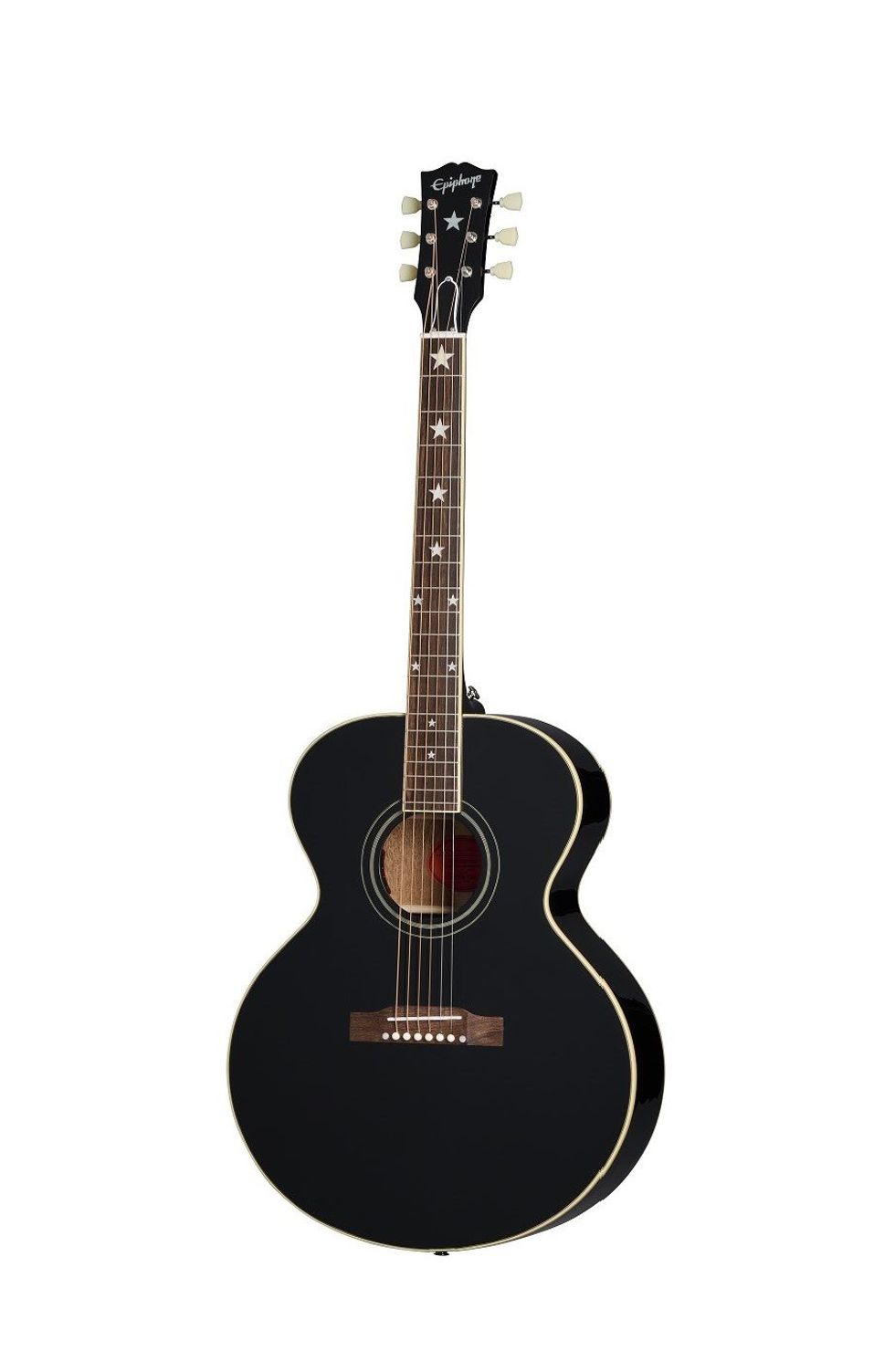
The Gibson J-180 has been the choice of rock, country, and pop royalty, including legendary artists like the Everly Brothers, Cat Stevens, Dwight Yoakam, and Billie Joe Armstrong, up to some of today’s most famous artists. In partnership with Gibson Acoustic in Bozeman, Montana, Epiphone is proud to release a new version of this player-favorite guitar. The Epiphone J-180 LS is packed with premium features, including a thermally aged solid spruce top with scalloped X bracing, solid mahogany back and sides, a one-piece mahogany neck with a 25.5” scale length, C-profile, laurel fretboard, and the iconic “star” mother of pearl inlays that the model is so well known for. The compensated saddle, bridge pins, and nut are bone, and the headstock features the world-famous Gibson-style “open book” headstock shape, with the Epiphone logo and headstock star proudly displayed in mother of pearl. An Inspired by Gibson Custom Double Diamond emblem is etched on the rear of the headstock. Available in a variety of eye-catching colors and equipped with an L.R. Baggs™ VTC under-saddle pickup and preamp system, this exceptional guitar is stage and studio-ready from the moment you take it out of the included hardshell case. The Epiphone J-180 LS is available worldwide in Ebony, Pink, and Frost Blue. Exclusive colors, available only on www.epiphone.com, include Kerry Green and Lavender.
